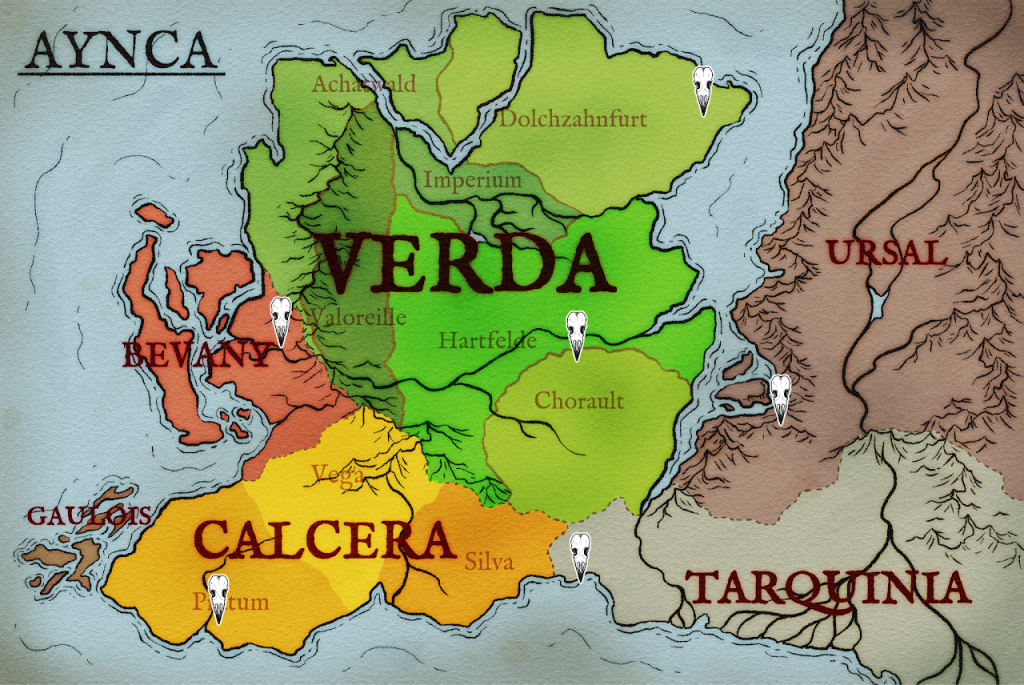
Overview
The first Jaegerhaus was founded in 1580 in Dolchzahnfurt, and is considered the main base of operations for all Jaegers. There are six other Jaegerhauses throughout the continent, with one in each of the nations except for Gaulois. Jaegers are the creation of Mattias Straussburg, the first Jaeger, and Baron Scholz von Wieseburg.
Before Jaegers, the common people took on the gruelling task of hunting monsters when they attacked their homes. There was never a truly organised front against the forces of Evil, until Mattias began a small company of travelling mercenaries who would offer their services in monster hunting. Mattias recognised that for this to be a success, they needed wealthy patronage which he found in the Baron. The success of the newly formed Jaegers led to the Baron ascending to become a Duke, and his descendants have remained stalwart figureheads of the Jaegers.
It was shortly after the Duke ascended to his title that the Jaegers became adopted by the wider continent via the Verda Empire, becoming a widely accepted state sponsored institution – and the only one to have achieved this universal status in the continent.
Training
Recruits must be at least 18 years of age and are subject to a minimum of 3 years of formal training at a Jaegerhaus which is made up of the first year as Basic Training, bringing up all Recruits to a minimum standard.
The following 2 years are dedicated to the three modules a Recruit selects, teaching them the basics of their chosen fields. These two years also include optional opportunities for exchange programmes with other Jaegerhauses.
After examination, students may require further tutelage in the classroom. However, most will be able to move on to the field mission stage which puts them onto the path to graduating as a fully fledged Jaeger.
For example:
- A Soldier who has served their country for many years decides to retrain as a Jaeger. They excel at the physical aspects of Basic Training, but struggle with studying as it is an entirely new concept to them, they are also new to reading and writing. It takes them 5 years total before they are able to attend field missions due to that struggle.
- A Merchant of 20 years decides to become a Jaeger. They manage their way through Basic just fine, and are competent at studying. They are able to attend field missions after 3 years.
- An Academic who has finished their degree at a University becomes a Jaeger. They struggle terribly during the physical element of Basic, and took another 6 months just to complete it. However they aced their studies. It took them 3.5 years to move onto field missions.
- A Witch of 70 years of age has had an epiphany, they have broken their pact and sought refuge in a Jaegerhaus. They seek to atone for their sins. They cannot pass Basic due to their age, but are welcome to join on as staff to the Jaegerhaus, where they can repent and support the Jaeger in their mission from the sidelines.
Hauses of Aynca
Dolchzahnfurt, The Verda Empire
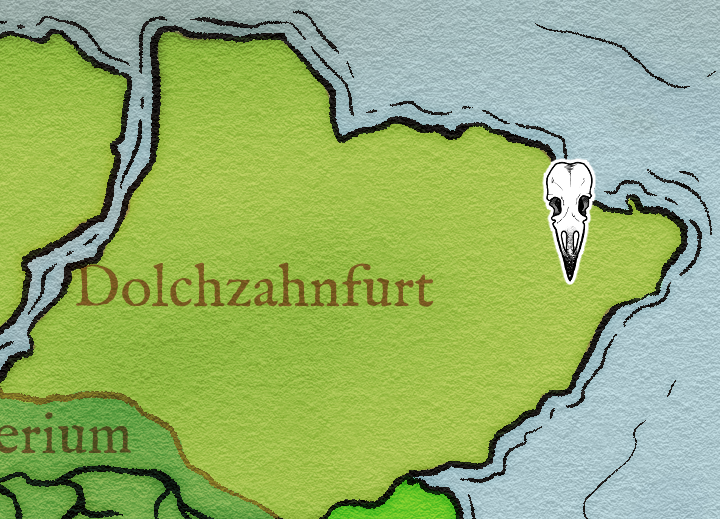
Jaegerhaus Dolchzahnfurt was founded in 1580 and operates out of Castle Wieseberg, overlooking the city of the same name, and shares the castle with the Duchy of Von Wieseburg. Jaegerhaus Dolchzahnfurt is not just the oldest Jaegerhaus but it is the base of operations for all Jaegers.
Its teaching style is the most rigid to the texts and for good reason, those texts have been developed over 250 years of Jaeger experience with knowledge passed down from generation to generation. While other nations naturally have those texts with their own cultural lessons, Jaegerhaus Dolchzahnfurt’s remains relatively unchanged and considered by many to be purist Jaeger.
One thing that has influenced this Verdan Jaegerhaus is its proximity to the Imperium and by extension the very heart of the Fayth itself. Jaegerhaus Dolchzahnfurt is undoubtedly touched by Fayth and one of the most religious of all Jaegerhauses alongside Puente de Piedra.
Identifying Features (Optional)
- Touches of Verdan green or the gold chevron
- Symbols of Fayth
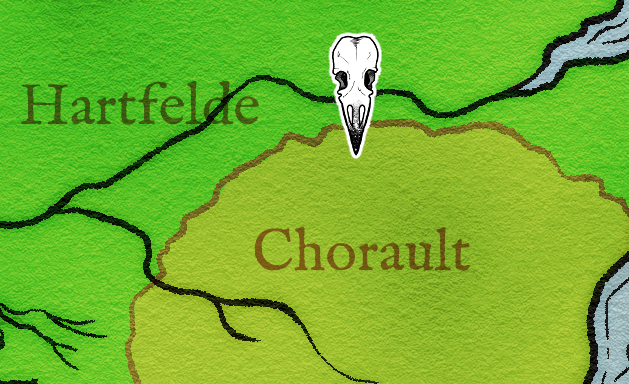
Hartfelde, The Verda Empire
The newer of the two Verdan Jaegerhauses, Hartfelde Jaegerhaus was established in 1655.
It is considered the more relaxed institution compared to its sister in Dolchzahnfurt, but despite its less prestigious nature, Hartfelde does not allow its big sibling to cast a shadow on its success. There are many famous Jaeger whom have graduated from Hartfelde, such as Anastasie Brunelle, known for defending the Valorielle city of Ravenkerk from total destruction by The Wild Hunt of 1663.
As it is a newer establishment, it is built to take on many more students and is better equipped to teach that volume. It is also less influenced by The Fayth, being farther from Imperium. However, as Hartfelde was once Verda’s capital, there is more political scrutiny (and thus, usually more funding) for the Hartfelde haus compared to elsewhere in Aynca.
Identifying Features (Optional)
- Touches of Verdan green or the gold chevron
- Symbols of Fayth
Coaleigh, Bevany
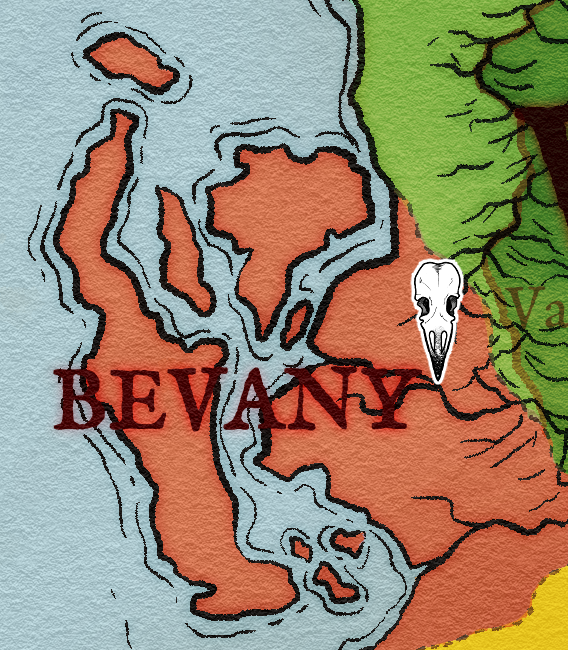
The Coaleigh Jaegerhaus resides in what was once the royal estate of King Whitlock Montford III, gifted to the Jaegers to replace their crumbling original Jaegerhaus by the Lord Protector, when the Bevanish deposed their monarchy. It was originally established in 1623.
Coaleigh is the third largest city in Bevany and the central processing plant for the surrounding mining region. Travelling further along the River Pincent, away from the industrial mining, is the Bevany Jaegerhaus.
Coaleigh Jaegerhaus is growing in reputation, as Bevanish cities swell and roads pave with fledgling democracy, Aynca is becoming more familiar with the Jaegers bearing Periwinkle.
Coaleigh may lie closer to the Verda border than most but they haven’t forgotten their cultural roots. Their teachings don’t doubt superstition or practices older than the Fayth but rather embrace them. They adhere to the Jaeger teachings but each Bevanish Jaeger brings their own touch of the ‘Old Practices’; the wild and forgotten traditions of the truly rural.
Identifying Features (Optional)
- Periwinkle
- Folk charms
Axholme, Ursal
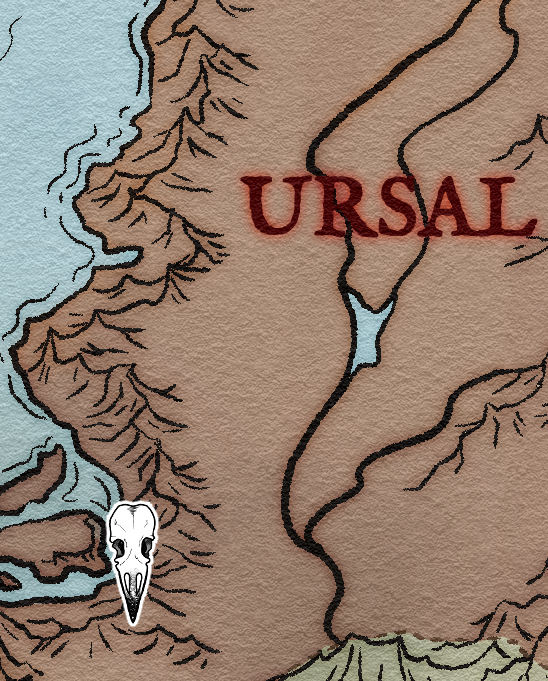
Axholme Jaegerhaus lies in the Sokovou fort on the shores of the Black Strait, Ursal. This is the most recent Jaegerhaus to be established, in 1746, coming at great cost with the fall of Jaeger Elise Arbeit, writer of the second edition of the Jaeger bestiary and descendant of Ulbrecht ‘Bright Wolf’ Arbeit.
Axholme is named for its position on Die Axe, the axe shaped inlet of sea in the Black Strait and the city sits atop the winding hills above the shore. Built as a defensive position for Ursal’s coast closest to the ambitious Verda empire, it towers above the shore looking down onto the lower part of Axholme, Sokovou fort. While the people of Axholme lived safely above, Sokovou fort sits right on the shore of the Black Strait itself. Rough waters and rumours of sea beasts makes this a truly formidable location. But now it houses the Ursal Jaegerhaus and the people of Aynca are learning more and more every day that the once isolationist Ursans are far more welcoming than believed.
Axholme Jaegerhaus is in many ways a bridge. Between the Heletvei of the North and the Fayth of the South. Between the teachings of old Jaegers and a new Jaegerhaus. Between hardiness and strength of the Ursans but also their warmth. Axholme Jaegerhaus embraces teachings not found in many other places but especially their skill in both combat and rituals.
Identifying Features (Optional)
- Yuwa charms and fetishes
Puente de Piedra, Calcera
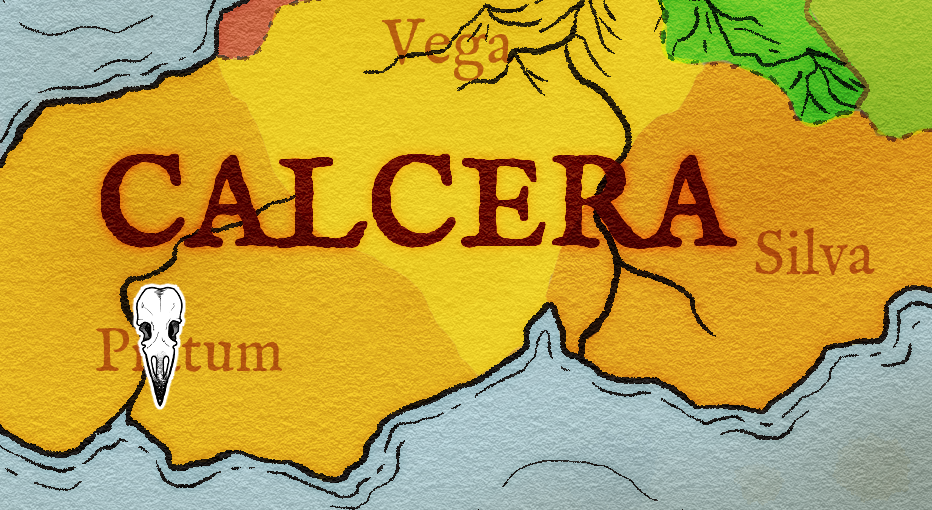
Puente de Piedra Jaegerhaus is situated in The Presidio overlooking Rio Escarlata, the Scarlet River. It was established in 1618.
Puente de Piedra Jaegerhaus is as unique a Jagerhaus as Calcera is as a region. No matter the age of the texts and teachings sent by the central Jaeger HQ, Puente de Piedra Jagerhaus will always examine, confirm and verify if it is the best and most up to date practice. Some have said the Calceran Jaegerhaus is too holistic in its methods but its results are rarely wrong.
Its study of crystal properties are unmatched in Aynca and its work in astrology and prophecy are groundbreaking. Its dedication to the Fayth is matched only by Dolchzahnfurt.
Identifying Features (Optional)
- Insignia of stars, touches of yellow, Puente de Piedra red fabric
- Symbols of Fayth
Vadali, Tarquinia
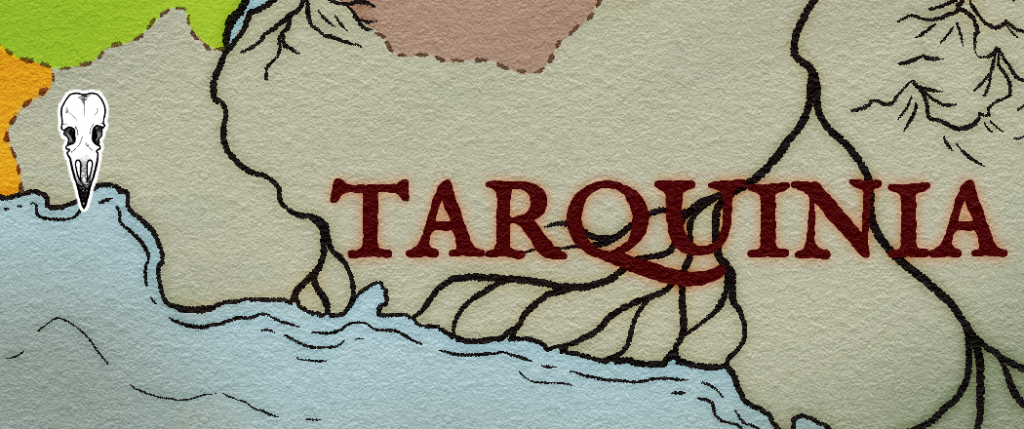
An island of Confleunce in the sea of Fayth, Vidali enjoys a rather nuanced approach to Jaegering as a result. It was founded in 1694.
Whilst training any who come to its doors and can pass initial training, the Vidali haus is far more embracing of those who seek redemption. For example, many Witches wishing for retribution specifically go to Tarquinia, as whilst every haus can help a Witch’s rehabilitation, Vidali is truly the best thanks to the influence of Confluence.
As with Tarquinian culture in general, the Jaegerhaus here focuses heavily on the grey – the shades between Good and Evil. Jaegers from elsewhere on the continent sometimes turn up their noses toward the views of Tarquinian Jaegers, but they always ask the question; why hunt what does no harm?
There was a scandal in 1740 when it was found that the Vidali Jaegerhaus was training known werewolves as Jaeger. This was shut down with great prejudice by Dolzchanfurt, and the other Grandmeisters agreed. The Grandmeister of the Vidali haus and those associated with the scandal were swiftly removed.
Identifying Features (Optional)
- Hoopoe, or similar coloured, feathers
- Beaded accessories
